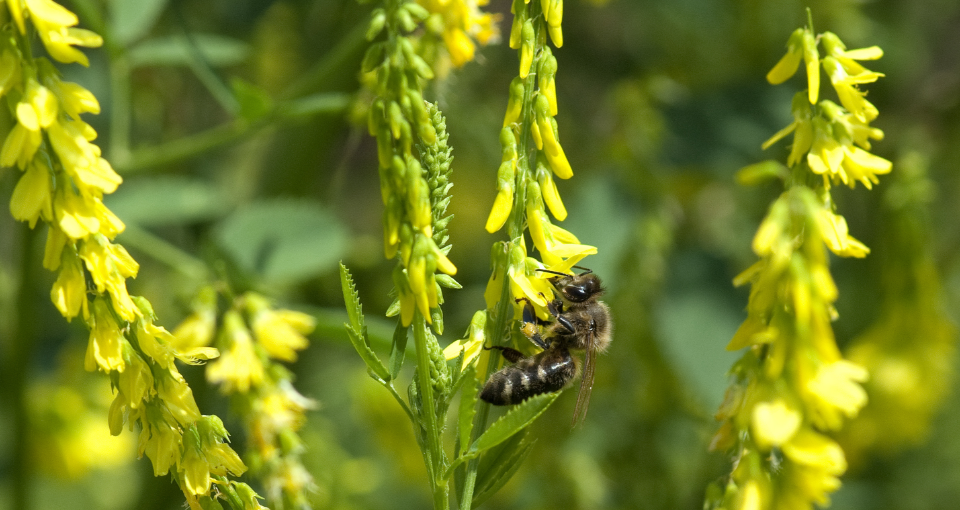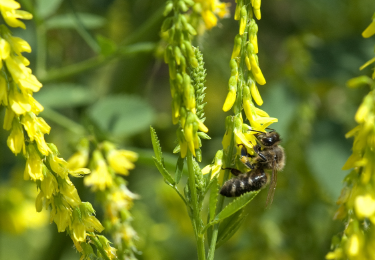
Watchlist
You can print out your watchlist and use it as a reminder for your purchase in the pharmacy.
Your watchlist currently contains no products.
Print


Melilot
Melilot
Botanik
Melilot (Melilotus officinalis) is a herbaceous plant that reaches a size of 30 to 100 cm. The stem leaves, which alternate on the upright and numerously branched stem, are divided into leaf stalk and leaf blade, with the leaf blade having three stalked subleaflets. The individual subleaflets are oblong, oval and with toothed margins. During the flowering period from May to September, the small flowers are yellow and stand in long and narrow inflorescences. When the fruit ripens, they form light brown, round legumes.
mehr
Geschichte
The generic name Melilotus is composed of the Greek words meli = honey and lotus = clover. It refers to the honey-scented, very nectar-rich flowers. Even Hippocrates is said to have used melilot as a plaster for fested ulcers. Internally, melilot was used to treat stomach pain, stomach ulcers and liver disease. In the Middle Ages, melilot was mainly used as a painkiller, soothing, diuretic, softening and dividing agent (Hager 1998). In Balkan countries such as Bulgaria it is a traditional component of spice mixtures such as Scharena Ssol and Ssminduch.
mehr
Inhaltsstoffe
Coumarins (melitoside), free coumarin, melitonin, umbelliferone, phenolic acids (including ortho and para coumaric acid, caffeic acid, salicylic acid), flavonoids, triterpenesaponins
mehr
Eigenschaften
Symptoms of chronic venous insufficiency include heavy legs, swelling, night cramps, itching and haemorrhoids. [1, 2]
Melilotus officinalis is an edema protector. [3] The naturally contained coumarin derivatives as well as coumarin are antiexudative (vascular-sealing), [4] they lack a hydroxy group (in position 4), which is why they are unlike the synthetic coumarins no vitamin K antagonists and therefore have no anticoagulant properties. [2]
The combination of melilot and the flavonoid rutin contained in butcher's broom has also been shown to have a positive effect on phlebitis in studies with a total of 1818 patients. [2]
1. Kommission E: 01224 Meliloti herba / Steinkleekraut - Berichtigung -: BAnz. Nr. 50 vom 13.03.1990
2. European Scientific Cooperative on Phytotherapy (2003-2009) E/S/C/O/P Monographs: The Scientific Foundation for Herbal Medicinal Products: Meliloti Herba
3. Hänsel R, Sticher O, Steinegger E (2010) Pharmakognosie, Phytopharmazie, 9., überarbeitete und aktualisierte Aufl. Springer-Lehrbuch. Springer Medizin, Heidelberg: Seite 178, 1083
4. Wiesenauer M PhytoPraxis: Mit 72 Tabellen, 6. Auflage: Seite 183
mehr
Produkte mit Melilot
Veneo 093® Bio Tabletten
Veneo 093® bio Tablets
